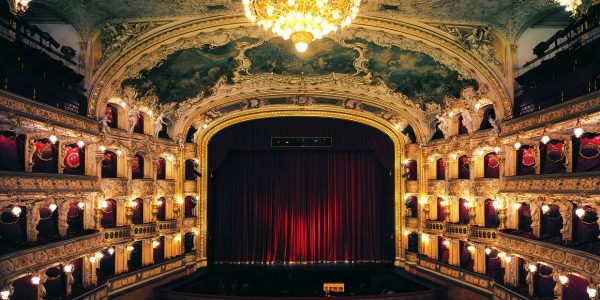Saint François d’Assise
After the success of Des canyons aux étoiles, which was a large twelve-movement work written by Olivier Messiaen, the composer believed his next project was to write an opera. Messiaen met with Georges Pompidou, the President of France, in 1971, who persuaded the composer to write an opera for Opera de Paris, Messiaen succumbed to the request and decided to base his opera on the subject of St. Francis, who portrayed a Christ-like embodiment of all humans in humility, suffering, and poverty. The composer doubled as the librettist for the work, which was premiered in Paris in 1983 but was poorly received. The metaphorical approach through abstraction, theatrical intersection, and fragmentation by a theatre director made the Salzburg and subsequent production of the opera a huge success.
The general components of 20th century opera or composition are based on series of tendency or style in technique such as serialism, minimalism, and spectralism. Each component is guided by rules ranging from intensity of simplicity and repetition, structure, to use of computer electronics. Olivier Messiaen established a system called “modes of limited transposition”, which is based on relating symmetry repetitive mode to their interval group. Messiaen combined this system together with other compositional processes that involve color and nature to compose his famous opera, Saint François d’Assise. The opera, which is in three acts and eight scenes has seven characters: Saint Francis, the Leper, the Angel, Brother Elias, and three Brothers — Leo, Masseo, and Bernard. The work requires a large orchestra and a ten-part chorus. The structure of the composition was based on dialogue between characters in a recitative approach. The free rhythm song was countered by orchestra response creating a juxtaposition effect. Messiaen structured the sound and its dynamics around the text. This approach recreates a sense of color decoration and the use of harmonic series to increase tensions and resolution within the music. As an ornithologist, Messiaen used humming effect within the chorus and orchestra to recreate the aesthetic appeal of birdsong. The conjunct and disjunct contour in the vocal line of the Angel’s character can also be said to having a bird-like effect.
In comparison to other 21th century opera, L’amour de loin, Saariaho was inspired to write her own opera L’amour de loin after she had watched Salzburg production of Messiaen’s Saint-François d’Assise, which was directed by Peter Sellars. The two operas were based on two different tales, one recounts the humility of an individual, while the other narrates the affection of two lovers. Saariaho opera incorporates spectralism, which involves the use of computer electronics with live music while Messiaen maintains the serialism system of mode of transposition in his opera. The “gamelan” effect was present in the two opera, which suggest the composer’s love for percussive instruments. This instrument also propels the rhythmic pattern in both operas. Saariaho’s opera tends to drown in its drone effect, which stresses throughout the music while the bird-like sound afloat Messiaen’s opera. With the series of compositional techniques emerging in the 20th and 21st centuries, staging an operatic work in appealing manner that complements the compositional techniques is vital to having a successful acceptance by the audience.
Bibliography
Bruhn Sigling. Messiaen’s Interpretations of Holiness and Trinity: Echoes of Medieval Theology in the Oratorio, Organ Meditations, and Opera. Hillsdale: Pendragon Press, 2008.
Dingle Christopher. The Life of Messiaen: Cambridge: Cambridge University Press, 2007.
Korhonen, Kimmo, and Risto Nieminen. “Saariaho, Kaija.” Grove Music Online. 2 May. 2018.

